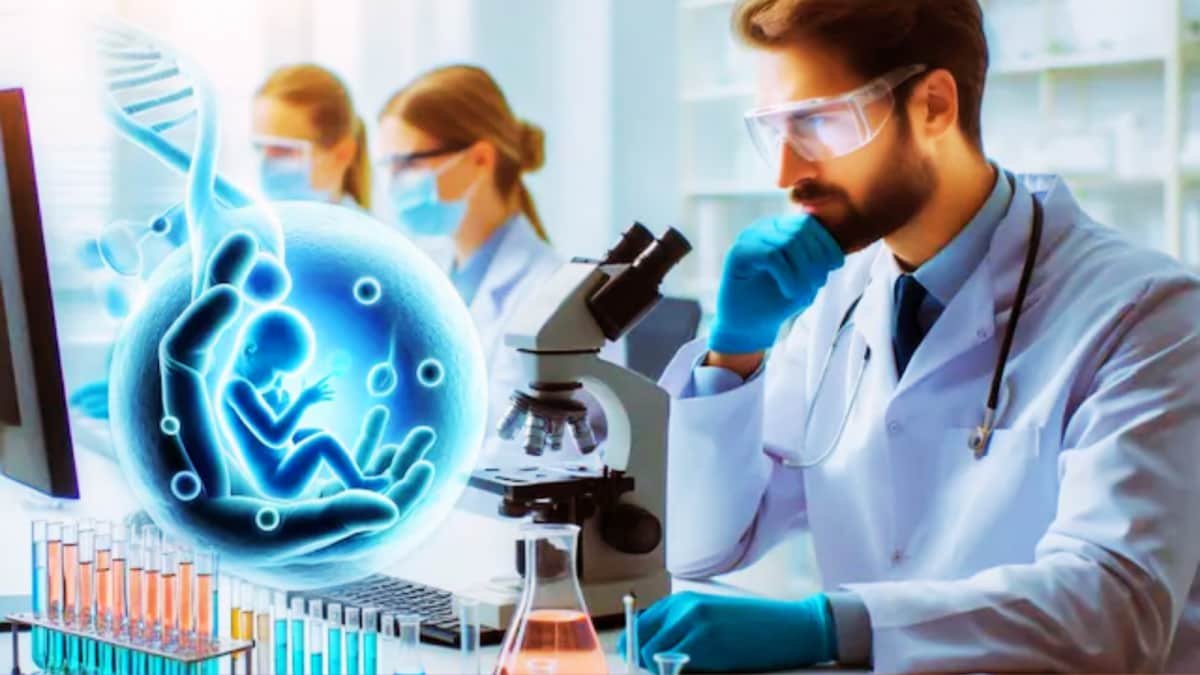Last Updated:July 07, 2025, 12:25 IST
In-vitro gametogenesis (IVG) could allow humans to create eggs and sperm from skin or blood cells within 5 to 7 years, revolutionising reproduction and challenging norms
Experts believe that within a decade, the first child born from lab-made eggs or sperm could become a reality, marking a profound shift in how we understand human life. (News18)
What was once the stuff of futuristic fantasy is now on the verge of becoming a reality. Scientists around the world are racing to develop in-vitro gametogenesis (IVG) — a revolutionary technology that could allow humans to create eggs and sperm from skin or blood cells, potentially enabling childbirth without traditional pregnancy.
At the forefront of this scientific frontier is Professor Katsuhiko Hayashi of Osaka University, Japan, whose lab is pushing the boundaries of what we know about human reproduction.
The Promise Of IVG: A New Era Of Parenthood
In an interview with The Guardian, Professor Hayashi revealed that his lab could produce fully functional human eggs and sperm in just seven years. This means a future where:
- A woman gives birth without ever being pregnant
- Two men become biological fathers
- A person creates a child using only their own DNA
While this may sound like science fiction, it’s fast becoming a scientific possibility.
Global Race To Revolutionise Fertility
Japan isn’t the only country investing in this bold future. In the United States, Conception Biosciences, a Silicon Valley startup led by Matt Krisiloff, claims their lab-based fertility solutions could reach clinics in as little as five years.
Armed with significant funding, their aim is not just to treat infertility but to reshape the very idea of family and reproduction.
In a landmark mouse experiment, researchers successfully created a female mouse using the sperm of two males, a proof-of-concept that’s now being translated to human biology.
How It Works: Eggs And Sperm From Skin
IVG begins with stem cells derived from human skin or blood. In Professor Hayashi’s lab, scientists have created tiny testicular and ovarian organoids — 1 mm sized structures that mimic real reproductive organs.
These lab-grown organs are already producing precursor sex cells, though challenges remain in sustaining their growth. Current hurdles include ensuring oxygen supply, cell stability, and avoiding genetic defects.
Another breakthrough includes the development of ovary organoids, which are now capable of progressing toward full human egg development.
What The Future Holds: Hopes And Controversies
If successful, IVG could radically alter options for people struggling with infertility or those traditionally excluded from biological parenthood. It opens the door for:
- Women to give birth at 60 or beyond
- Single individuals to reproduce without a partner
- Embryos made from the DNA of three or more people
But with innovation comes uncertainty. IVG raises serious ethical, legal, and religious questions. Issues of genetic health, societal acceptance, and long-term effects remain largely unanswered.
Global Status And Ethical Landscape
Currently, IVG is banned in the UK, though the US and Japan continue to fund and accelerate research. Professor Saito of Kyoto University and several American startups, including Conception Biosciences, are actively competing in this rapidly evolving space.
While the timeline is uncertain, experts believe that within a decade, the first child born from lab-made eggs or sperm could become a reality, marking a profound shift in how we understand human life.
- First Published:
#Birth #Pregnancy #Lab #Eggs #Sperm #Closer #Reality #Health #Fitness #News




